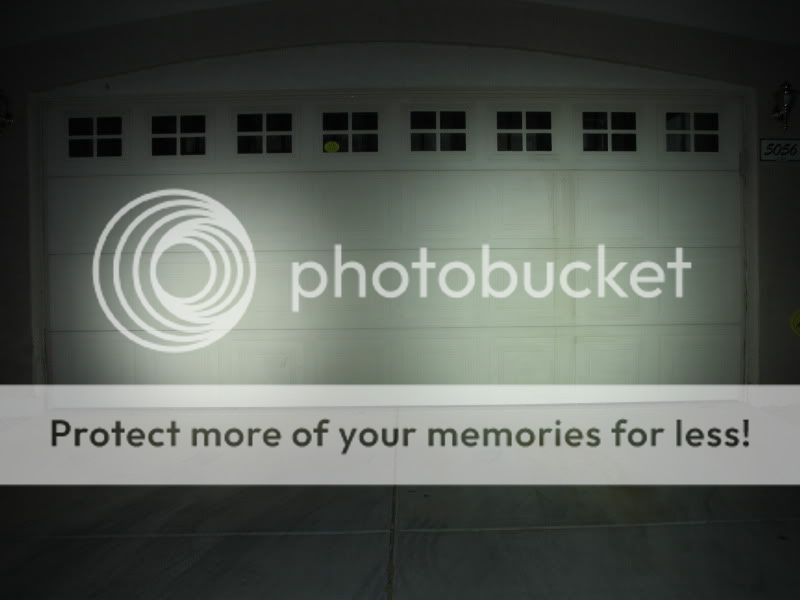There have been many attempts to standardize beamshot's over the years, ever since I was just a lurker here.
The problem is always the variables, hundreds of them. Your proposed simplified method is a good idea in that it's simple but it's probably not something that many are going to what to adopt, no matter how simple or structured the plan is. For some people shinning up a stairwell is easiest, for others down all hallway and for others a basement, and for still yet others, a white wall. Personally, I don't have a lot of open white wall space in my house and it's not the way I prefer to examine beam characteristics.
All the variations in camera sensors, lenses, and camera set-up can be so vastly different that it's probably not going to be worth the effort to "unify." Your plan would regularly show the dimensions of a beam hot spot and that's all. Well, no disrespect to you

but I don't prefer to know hot spot dimensions at four feet. I just don't see myself spending the time examining another's beamshots and thinking, "hey, I wonder if my AAA light is wider or more narrow than his AAA light" then go about setting up my camera and tape measure to compare. Instead, I'll just wait for someone to post a direct comparison or do it myself if I have the two lights at hand. That's all I'm after anyway, a relative comparison, taken by the same camera, with the same settings and the same time.
Typically what happens here, as you know, is that people take the beamshots that they prefer, enjoy, or what's practical within their given time or convenience. For me I like to see beams side by side on a large garage door for example from about 25 feet. Something like this for example.
Maratac SS 10440 30.8 lux..........................Preon Ti 10440 39.0 lux
It gives scale, some color, an idea of beam intensity, etc. Most importantly having the two lights gives a direct and relative comparison result. In contrast, if I took a picture of the Maratac beam with a tape behind it one month, then the next month I took a picture of the Preon beam, I really don't know how I'd be helping people very much. Sure, I could stack the two pics or reduce them and put the side by side but it's still inferior to recording the two beams in real time. Not to mention, that ambient light is impossible to control outdoors, even if I remember to set all the camera setting, aperture, shutter, ISO, white balance, and focal length. That means this would only be an indoor beamshot option.
I respect and applaud your desire to standardize

but I don't think it will catch on or work any better than ideas like it in the past have worked. I will always strive to provide CPFers with the very best shot's I can give and limiting myself to 4' will not allow me to provide what I perceive to be as the best data. If this was a full time job for me and I was working in a lab testing lights for people, I'd use some form of your suggestion. But I'd also use 5 other types of photographic methods and locations in an attempt to capture everything that the 4' shot's couldn't. Since time is limited I instead choose to use the best that's available to me. With small LED lights the 25 foot garage door works. For larger LED's that may be my backyard fence, for HID's it might be 335 yard power line tower in a nearby drainage. Many good options.
Still a nice thread and it's always worth discussing. :thumbsup:







 but I don't think it will catch on or work any better than ideas like it in the past have worked. I will always strive to provide CPFers with the very best shot's I can give and limiting myself to 4' will not allow me to provide what I perceive to be as the best data. If this was a full time job for me and I was working in a lab testing lights for people, I'd use some form of your suggestion. But I'd also use 5 other types of photographic methods and locations in an attempt to capture everything that the 4' shot's couldn't. Since time is limited I instead choose to use the best that's available to me. With small LED lights the 25 foot garage door works. For larger LED's that may be my backyard fence, for HID's it might be 335 yard power line tower in a nearby drainage. Many good options.
but I don't think it will catch on or work any better than ideas like it in the past have worked. I will always strive to provide CPFers with the very best shot's I can give and limiting myself to 4' will not allow me to provide what I perceive to be as the best data. If this was a full time job for me and I was working in a lab testing lights for people, I'd use some form of your suggestion. But I'd also use 5 other types of photographic methods and locations in an attempt to capture everything that the 4' shot's couldn't. Since time is limited I instead choose to use the best that's available to me. With small LED lights the 25 foot garage door works. For larger LED's that may be my backyard fence, for HID's it might be 335 yard power line tower in a nearby drainage. Many good options.
